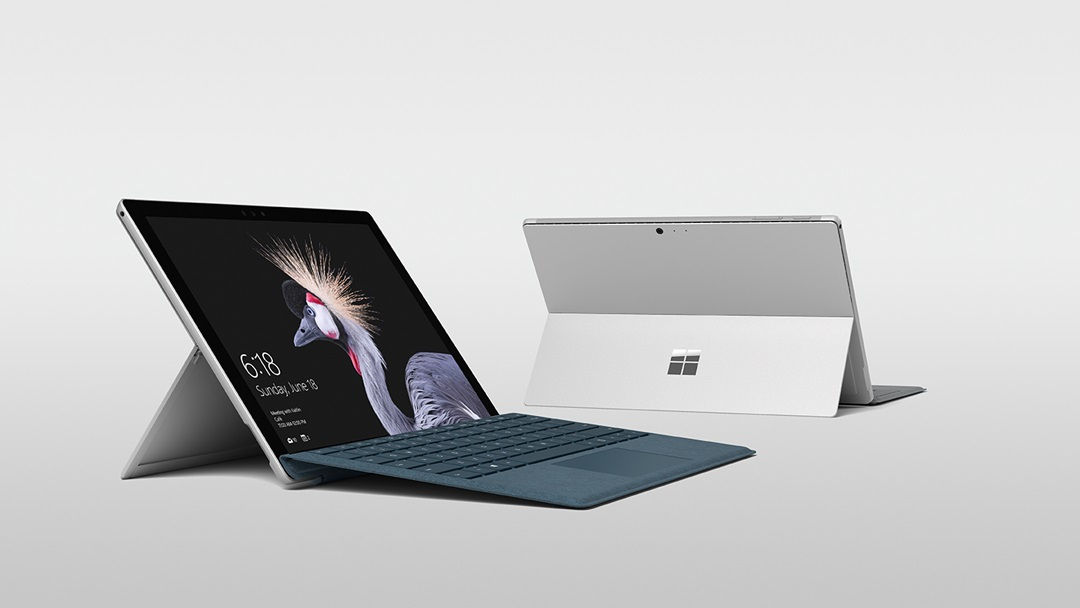
Microsoft has spent considerable effort in refining its Surface brand, and its latest Surface Pro tablet is the best example of how far the company has gone since the humble and shaky beginnings of the Surface 2.
In 2018, the Microsoft Surface Pro has matured into a product that delivers a far better user experience than any previous concept, by breaking down the barrier between desktop and mobile, by simply repositioning the Type Cover, which causes the keyboard to connect or disconnect, which triggers the tablet mode toggle. Thanks in no small part to Windows 10, and its ability to morph into a tablet friendly operating system, the way Surface devices work come with the additional perk of not hindering the ability to access desktop resources, as every desktop and mobile app is still available, regardless of the configuration of your Surface..
The hardware powering the Surface Pro line isn’t uncommon among other ultraportable devices. The base configuration sports an Intel Core m3 processor, which is a very respectable choice for any entry level device, and a standard 128GB SSD, with 4GB of RAM.
Things aren’t expected to change much this year, as the next generation Surface Pro, technically “Pro 5”, will likely have some minute enhancements to the current formula, without anything too radical.
The Surface Pro 6, however, which is tentatively expected to ship in 2019, is rumored to be a completely different beast altogether.
2019 is also the year that is most likely to see the birth of a Microsoft Surface Phone, which may, or may not feature a foldable screen. Whether the same treatment will be given to the Surface Pro 6, it’s still too early to tell, considering that we have not yet seen a workable prototype of anything like it, running windows 10, in spite of claims that Samsung is already working on a similar concept for its Samsung Galaxy product lines.
Project “Carmel” is the code name for the Surface Pro 6, which is really all we know about it for the time being, aside from rumors hinting to the possibility that this product will be designed to directly compete with Apple iPad Pro and Chromebook devices, by offering consumers configurations with a competitive price point that even Google might have a hard time matching, considering that the Pro 6 is expected to run the full desktop version of Windows 10.
A few theories can be deducted from what we currently do know about Microsoft.
First of all, Microsoft has been working for a while on powering its Surface devices with ARM chips, such as Snapdragon, to achieve true all-day battery life, without holding back performance.
Another important piece of information is Microsoft Windows 10 S-mode, a feature added to the operating system, that allows to instantly switch Windows 10 desktop into a fully mobile app-driven experience, much like iOS or Android.
S-mode is designed to squeeze as much battery juice as it can, by blocking all hardware-hungry processes necessary to the full desktop version of Windows 10, turning a device into a tablet, at the flip of a switch.
S-mode is different than Tablet mode, because Tablet mode simply changes the look and feel of the interface, without losing access to desktop apps and processes.
The way for Microsoft to charge less for its new future tablets may just be that the Surface Pro 6 base configuration will be restricted to S-mode, with the option of unlocking the full desktop mode by acquiring an additional license.
This will allow to shave quite a bit off of the initial cost of purchasing a Surface device, while still offering consumers a powerful tablet that is still more versatile than a Chromebook, or an iPad Pro.